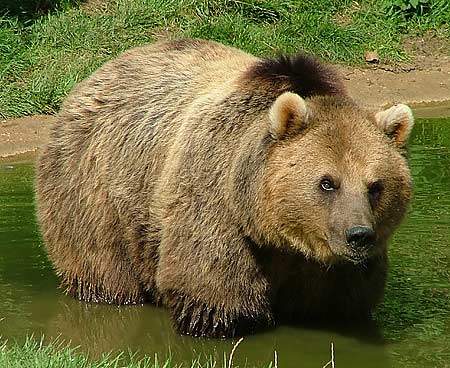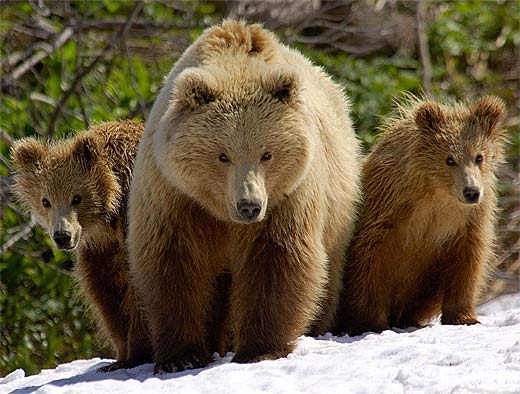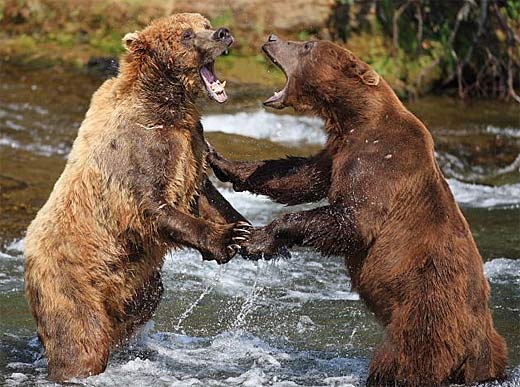Brown Bears

Brown bears are one of the largest mammals in North America, Europe and Asia. There are a number of subspecies of the brown bear, including the Grizzly, the Gobi, the Carpathian, the Kamchatka and the Hokkaido among others. Their favorite home range areas are forests interspersed with meadows and wet grasslands in or near the mountains. They spend a lot of their time roaming around their range searching for food. When a brown bear stands, it might be perceived as a threat but they may also simply be curiously checking out their environment.
Brown bears are larger than black bears, and are second only to polar bears in size. “Largest Bear” is a bit fuzzy because it could refer to tallest, heaviest, broadest, the average for a species or individual specimen. The larger grizzly bear males stand around 8 ft (2.5 m) tall, the largest are near 11 ft (3.4 m), and can weigh anywhere from 200 – 600 lbs (90 – 270 kilos) and have even weigh at times more than 1000 lbs (454 kg). The Kodiak bear is considered slightly larger than the grizzly and just a bit smaller than the polar bear.
Here is a very interesting story (warning: graphic content) from Scopes setting some of the facts straight about some internet rumors surrounding one of the largest bear encounters of recent times. Unfortunately, this bear was hunted and killed.

Hair color is not the indicator of species and varies widely. Both black and brown bears can vary from blondish to a dark black depending on age, sex and season. The thick fur of the brown bear can sometimes have a frosty grizzled appearance and that is where the name grizzly comes from. The brown bear has a more concave face, higher shoulders, longer curved claws and more rounded ears than a black bear does.
Brown bears are omnivores but as much as 80-90 percent of what they eat can be fruit, vegetable, berries, nuts, bulbs and roots. They may eat a lot of insects, they sometimes tear apart rotten logs or turn over large stones in search of insects and larvae, and of course honey is a favorite. In western North America both salmon and trout can be important parts of their diet. They must eat enough to build up their supply of fat for the long winter hibernation.
Breeding season for brown bears is between May and July. Females can give birth to 1 to 4 cubs (most often 2) every three years. Cubs can remain with the mother for up to 4 years.

